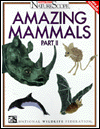Dissolution and Precipitation: Can We Transfer Ideas?
Susan R. Singer and William B. Bonvillian recently wrote an editorial in the journal Science. The article, " Two Revolutions in Learning ", suggests ways in which online learning and research in science education can work together to produce transformative outcomes in education. Researchers in education can inform the online learning community with what works and what does not work while the online community can provide researchers with opportunities of quickly collecting vast data on learning. It is true that the online platform provides an additional arena to test and explore ideas on teaching and learning. It is easier to scale and it does have the appeal of being able to reach a broader population for subjects. Since online courses also carry the objective of making students learn, these courses need to be informed and guided by research in education. Lofty ideas always look good on paper. When one gets into the details, things can get messy pretty quick. There are nume...





